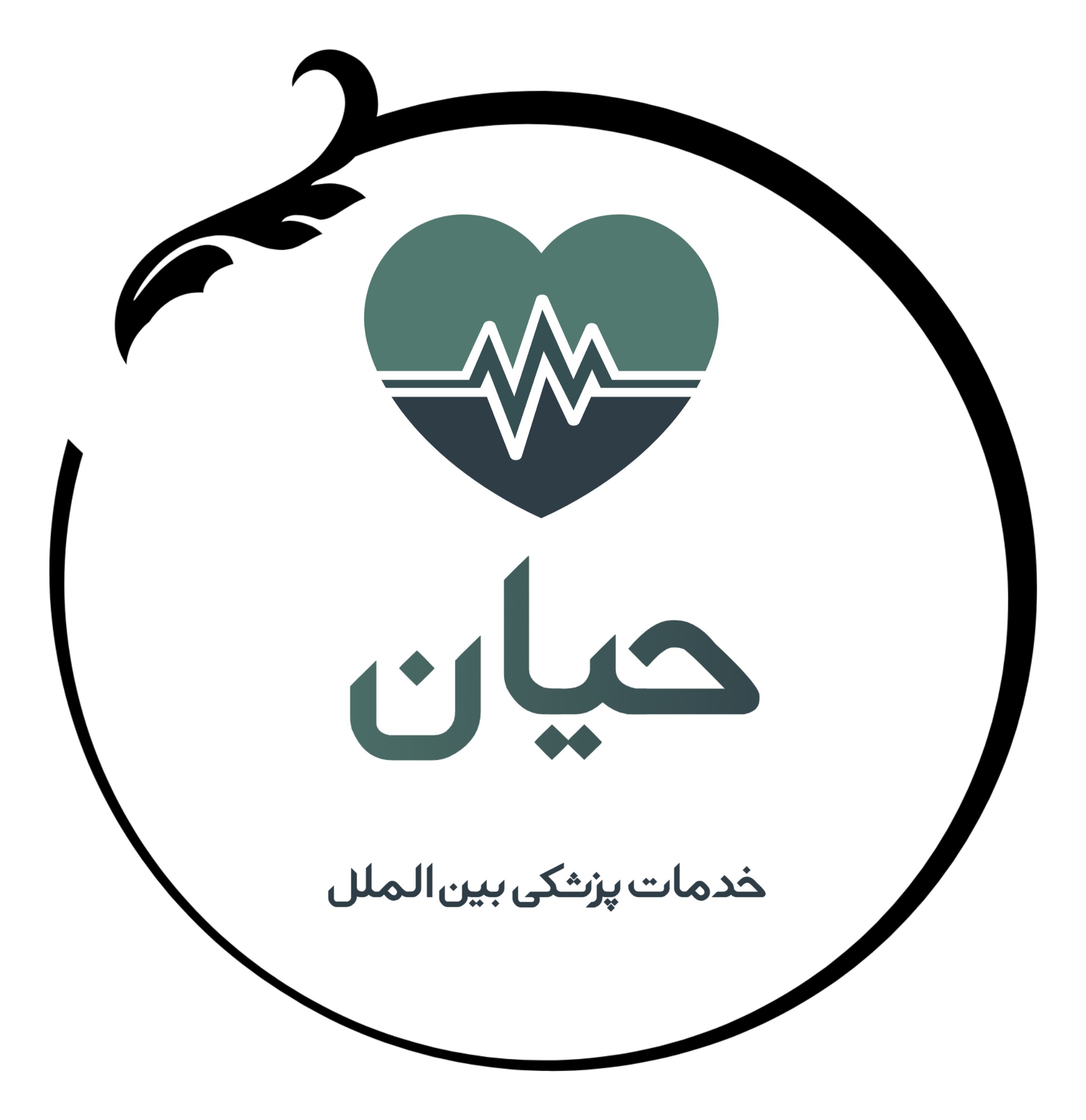Introduction
Septoplasty is a surgical procedure designed to correct a deviated nasal septum, the wall of cartilage and bone that separates the two nostrils. When the septum is misaligned, it can obstruct airflow, leading to breathing difficulties, chronic sinus infections, and other nasal issues. For those struggling with these symptoms, Septoplasty offers a reliable solution to improve nasal function and overall quality of life. In Iran, Septoplasty is performed by highly skilled ENT surgeons in modern facilities, making it an attractive option for medical tourists seeking affordable, high-quality care.
Septoplasty involves straightening the nasal septum by trimming, repositioning, or replacing cartilage and bone. The procedure aims to restore balanced airflow through both nostrils, alleviating symptoms caused by a deviated septum. Unlike cosmetic surgeries, Septoplasty is primarily functional, focusing on improving breathing rather than altering appearance.
A deviated septum can block one or both nasal passages, making breathing difficult, especially during sleep or physical activity. This obstruction may lead to snoring, sleep apnea, or recurrent sinus infections. Septoplasty realigns the septum, improving airflow and reducing these symptoms. Patients often report better sleep, increased energy, and fewer sinus-related issues after the procedure.
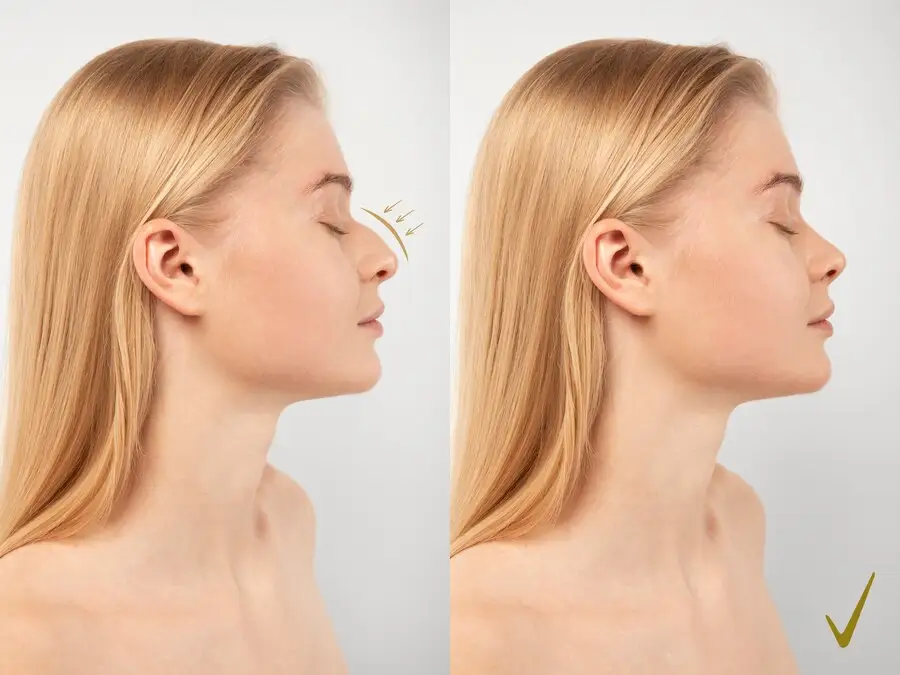
Definition of Septoplasty
Septoplasty involves straightening the nasal septum by trimming, repositioning, or replacing cartilage and bone. The procedure aims to restore balanced airflow through both nostrils, alleviating symptoms caused by a deviated septum. Unlike cosmetic surgeries, Septoplasty is primarily functional, focusing on improving breathing rather than altering appearance..
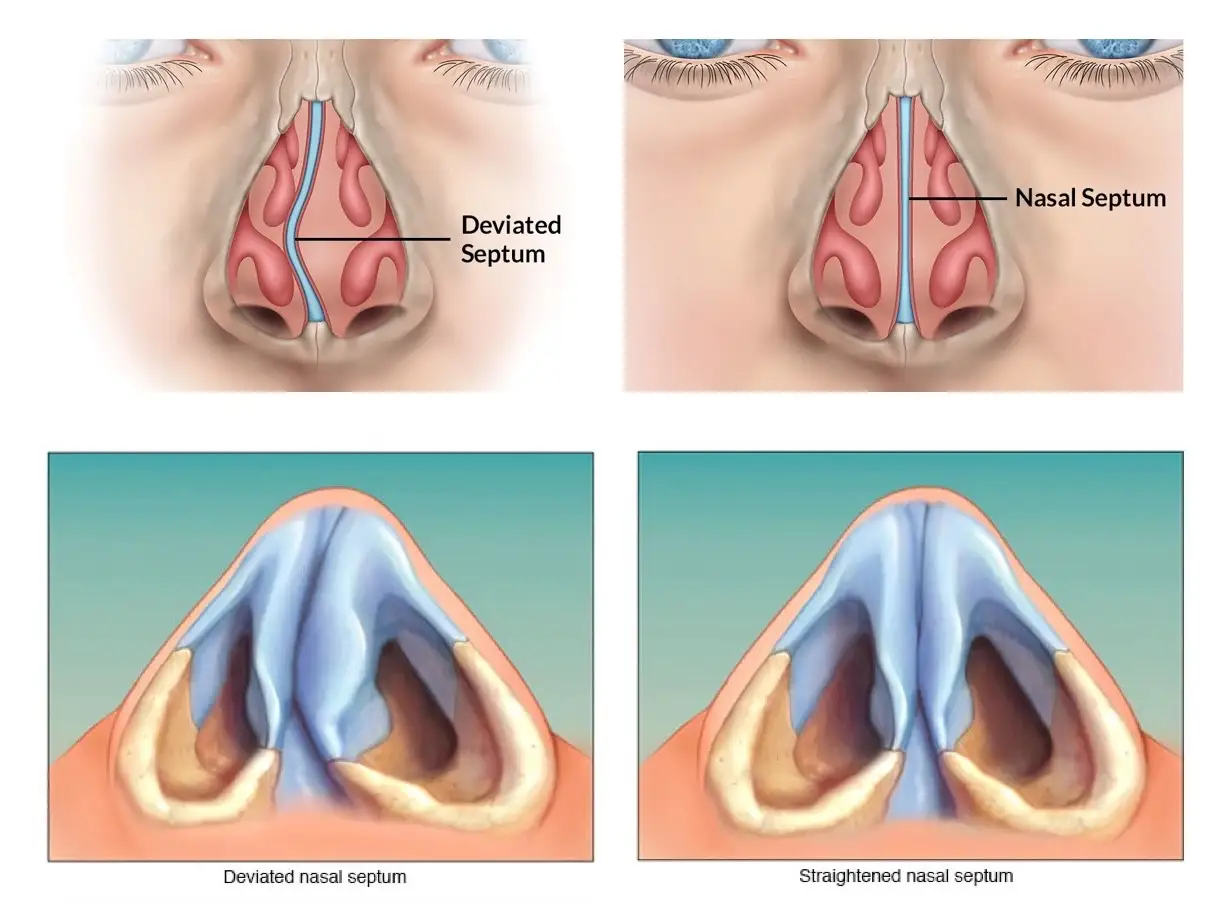
Difference Between Septoplasty and Rhinoplasty
While both Septoplasty and rhinoplasty involve the nose, their purposes differ significantly. Septoplasty corrects internal structural issues to enhance breathing, addressing conditions like nasal obstruction or chronic sinusitis. Rhinoplasty, often called a "nose job," is a cosmetic procedure to reshape the nose’s external appearance, such as reducing a hump or refining the tip. In some cases, patients opt for a combined procedure, known as septorhinoplasty, to address both functional and aesthetic concerns (Rhinoplasty vs. Septoplasty).
Role of Septoplasty in Improving Breathing
A deviated septum can block one or both nasal passages, making breathing difficult, especially during sleep or physical activity. This obstruction may lead to snoring, sleep apnea, or recurrent sinus infections. Septoplasty realigns the septum, improving airflow and reducing these symptoms. Patients often report better sleep, increased energy, and fewer sinus-related issues after the procedure .
Costs
A major advantage of Septoplasty in Iran is cost savings. Below is a comparative cost table for Septoplasty in various countries:
| Country | Average Septoplasty Cost (USD) |
|---|---|
| USA | $3,000–$22,000 |
| UK | $2,500–$10,000) |
| Germany | $3,400–$11,350 |
| Iran | $1,800–$3,000 |
This affordability, combined with quality care, makes Iran an attractive option (Septoplasty in Iran | Procedure, Costs).
2. Indications and Patient Selection
A deviated septum is a common condition, affecting up to 80% of people, though not all require surgery . Septoplasty is recommended when symptoms significantly impact daily life. Proper patient selection ensures optimal outcomes, involving a thorough evaluation by an ENT specialist.
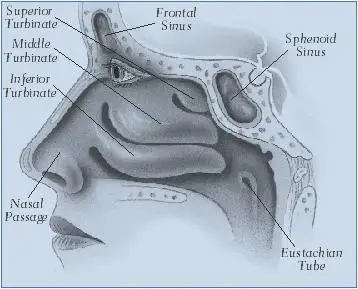
Symptoms of a Deviated Septum
A deviated septum can cause a range of symptoms, including:
Obstruction in one or both nostrils, often worse on one side.
Persistent stuffiness, especially during colds or allergies.
Due to dryness on the septum’s surface.
Impaired sinus drainage leading to recurrent infections.
Particularly during sleep, sometimes linked to sleep apnea.
Caused by pressure from blocked sinuses.
Mucus draining into the throat, causing irritation .
These symptoms may worsen over time or with environmental triggers like allergies, prompting the need for surgical intervention.
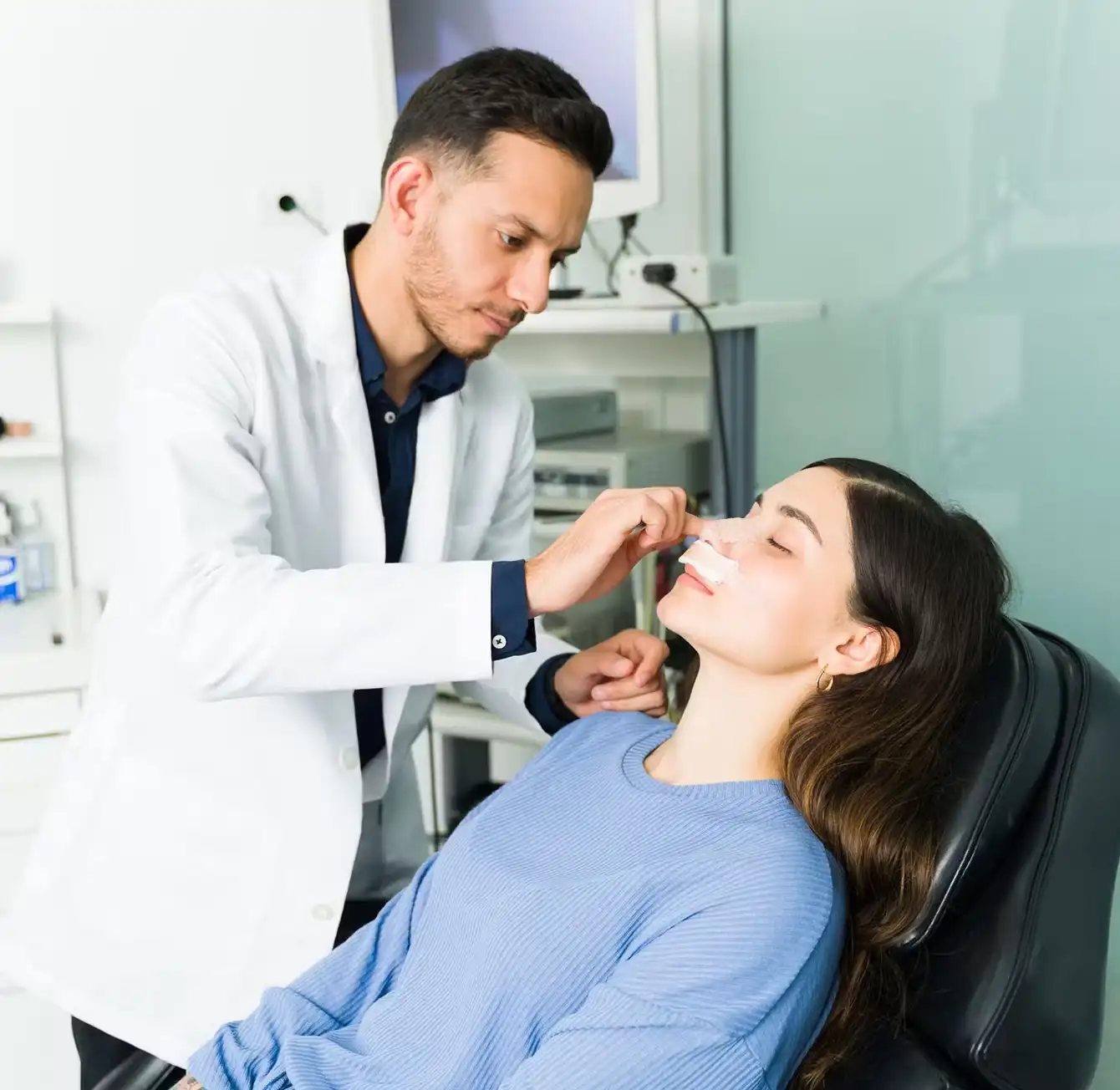
Pre-operative Examinations
Before Septoplasty, a comprehensive evaluation is conducted to confirm the diagnosis and assess suitability for surgery. Common examinations include:
Discussing symptoms, previous nasal injuries, or surgeries.
Using a nasal speculum to inspect the septum and nasal passages.
A small camera to visualize the septum’s alignment and any associated issues.
In cases of suspected sinus disease or complex deviations, imaging provides detailed views . These assessments help tailor the surgical approach to the patient’s specific needs, ensuring the best possible outcome
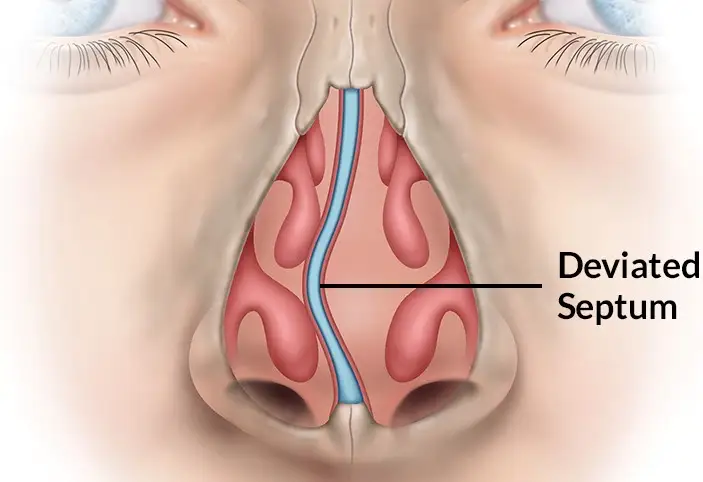
3. Surgical Techniques and Approaches
Septoplasty is performed using various techniques, depending on the severity of the deviation and the surgeon’s expertise. The procedure typically lasts 30–90 minutes and is conducted under general or local anesthesia .
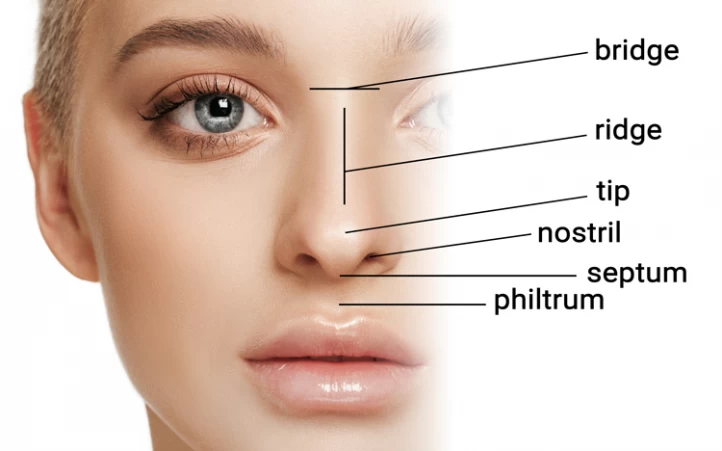
Closed Approach
The closed or endonasal approach is the most common technique, involving incisions inside the nostrils. This method leaves no external scars and is suitable for straightforward deviations. The surgeon lifts the mucosal lining, repositions or removes deviated cartilage and bone, and closes the incision with sutures .:
Open Approach
For complex cases or when combined with rhinoplasty, the open approach involves a small incision across the columella . This provides better access to the septum and surrounding structures, though it may result in a minor external scar .
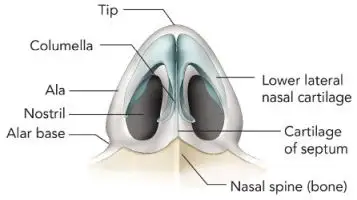
Endoscopic Septoplasty
Endoscopic Septoplasty uses a camera to guide the surgery, offering enhanced visualization and precision. This minimally invasive technique is ideal for isolated deviations and may reduce recovery time .
Techniques for Correcting the Septum
During Septoplasty, surgeons may:
1.Trim or remove deviated cartilage or bone.
2.Score the cartilage to allow reshaping.
3.Use grafts or splints to stabilize the septum, especially in revision cases.
4.Preserve sufficient cartilage to maintain nasal structure .

4. Recovery and Postoperative Care
Septoplasty is typically an outpatient procedure, allowing patients to return home the same day. Initial recovery takes about one to two weeks, with full healing occurring over several months .
Hospital Stay and Initial Recovery
Most patients are discharged within hours after surgery, once anesthesia wears off. A friend or family member should drive them home, as grogginess is common. Nasal packing or splints may be used to control bleeding and support the septum, typically removed within 24–48 hours .
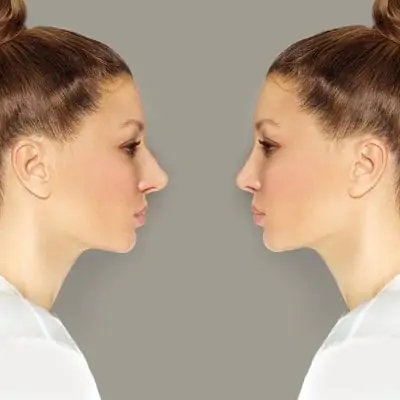
Pain Management and Swelling
Mild pain, swelling, and congestion are normal in the first week. Doctors may prescribe pain relievers and recommend saline sprays to keep the nasal passages moist. Elevating the head while sleeping helps reduce swelling.
Care Instructions
To promote healing, patients should:
1.Avoid blowing the nose for at least one week.
2.Sneeze with the mouth open to reduce pressure.
3.Refrain from strenuous activities for two to three weeks.
4.Keep the surgical site clean, avoiding water on bandages .
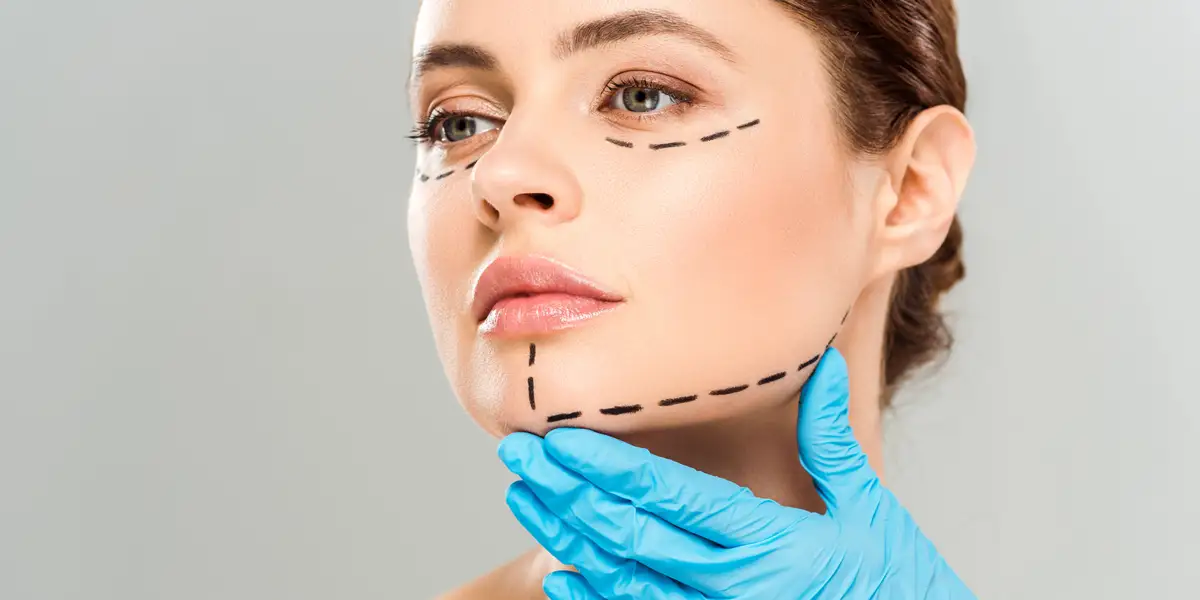
Nutritional Tips
A balanced diet supports recovery. Recommendations include:
1.Staying hydrated to keep mucus thin.
2.Eating soft foods like soups or yogurt if chewing is uncomfortable.
3.Avoiding spicy or hot foods that may irritate the nose.
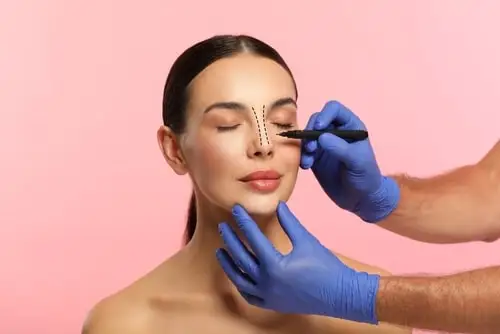
5. Risks and Potential Complications
While Septoplasty is generally safe, it carries some risks, as with any surgery. Complications are rare but should be discussed with your surgeon .
Common Complications
Before having septoplasty, doctors perform a detailed check-up to make sure the diagnosis is accurate and the surgery is the right choice. Common tests include:
Minor bleeding is expected for 24–48 hours but may require packing if excessive.
Proper hygiene and antibiotics reduce this risk.
A hole in the septum, which may cause whistling or crusting.
Scar tissue forming between nasal structures .
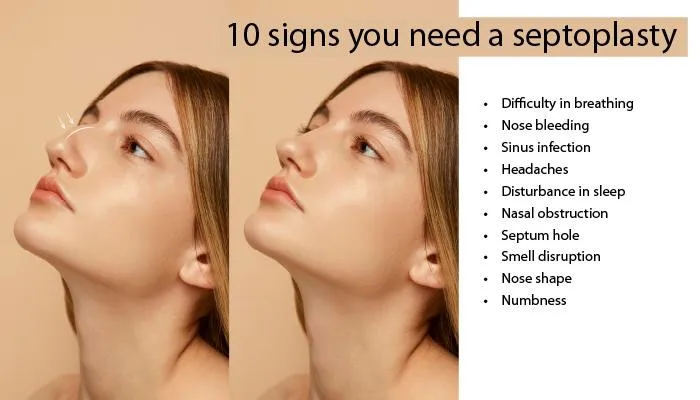
Rare Complications
To ensure the best outcome from septoplasty, a full pre-surgical evaluation is carried out. This helps confirm the nasal issue and determine if surgery is the right step. The assessment usually includes:
Temporary numbness in the upper teeth or nose, resolving within months.
Rare and usually temporary.
Extremely rare, occurring in high septal corrections .
Managing Complications
Most complications are manageable with prompt medical attention. Regular follow-ups ensure early detection and treatment. In Iran, experienced surgeons minimize risks through precise techniques and advanced technology..
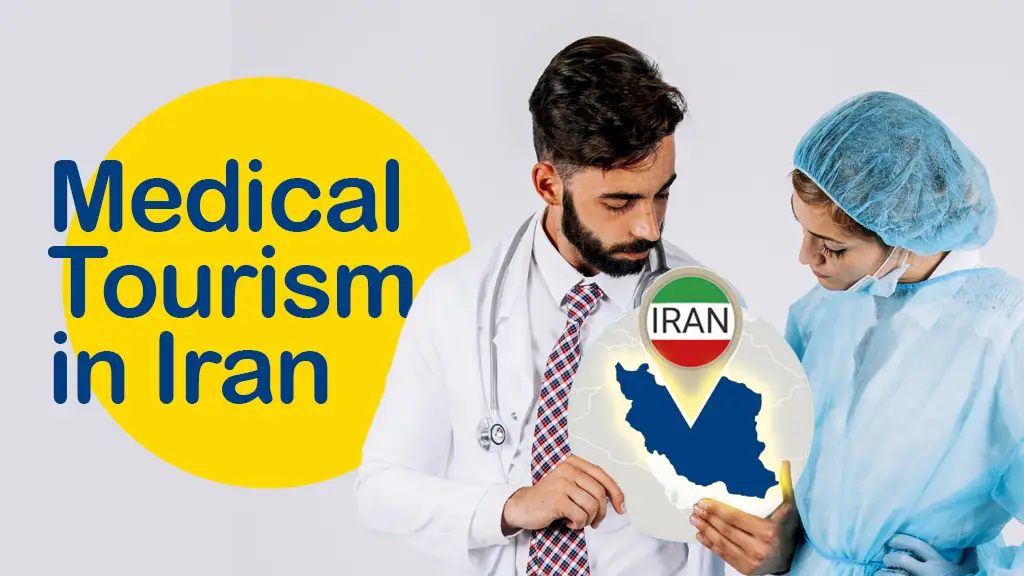
Why Choose Iran for Septoplasty?
Iran has become a leading destination for medical tourism, particularly for nasal surgeries like Septoplasty. The country offers a unique combination of skilled surgeons, modern facilities, and affordable costs, attracting over 1.2 million medical tourists annually, contributing approximately $1 billion to the economy .
Experienced Surgeons
Iran is renowned for its expertise in ENT and plastic surgery, with surgeons like Dr. Alireza Mohebi, a fellow of the European Board of Otorhinolaryngology, leading the field . Many have performed thousands of successful nasal surgeries, ensuring high success rates.
High-Quality Medical Facilities
Iran’s hospitals and clinics are equipped with cutting-edge technology, meeting international standards. Cities like Tehran and Shiraz are hubs for medical tourism, offering state-of-the-art facilities .
Comprehensive Medical Tourism Packages
Companies like Hayyan provide all-inclusive packages, covering surgery, accommodation, transfers, and interpreters. These packages eliminate logistical concerns, making the process seamless for international patients.
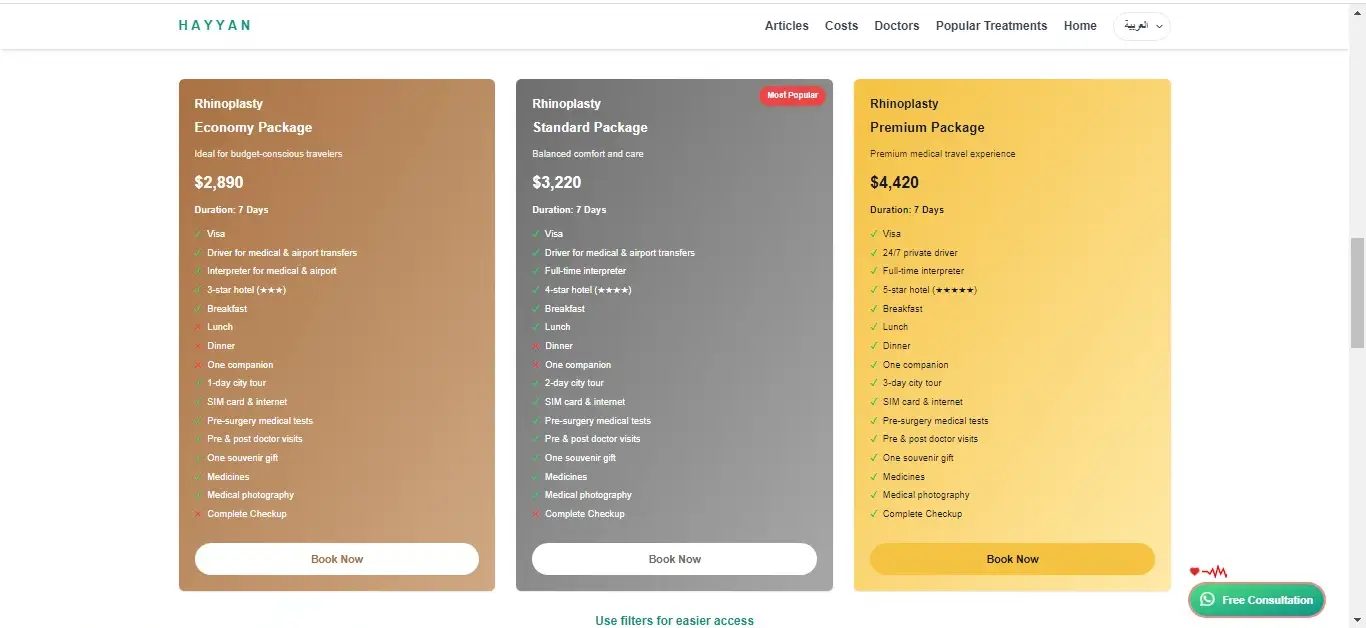
7. About Hayyan: Your Partner in Medical Tourism
Hayyan is a trusted medical tourism provider in Iran, dedicated to making your Septoplasty experience stress-free and effective. With a focus on patient satisfaction, Hayyan coordinates every aspect of your medical journey.
Services Provided
Hayyan offers:
Minor bleeding is expected for 24–48 hours but may require packing if excessive.
Proper hygiene and antibiotics reduce this risk.
A hole in the septum, which may cause whistling or crusting.
Scheduling consultations, surgeries, and follow-ups.
All-inclusive plans covering surgery and travel logistics.
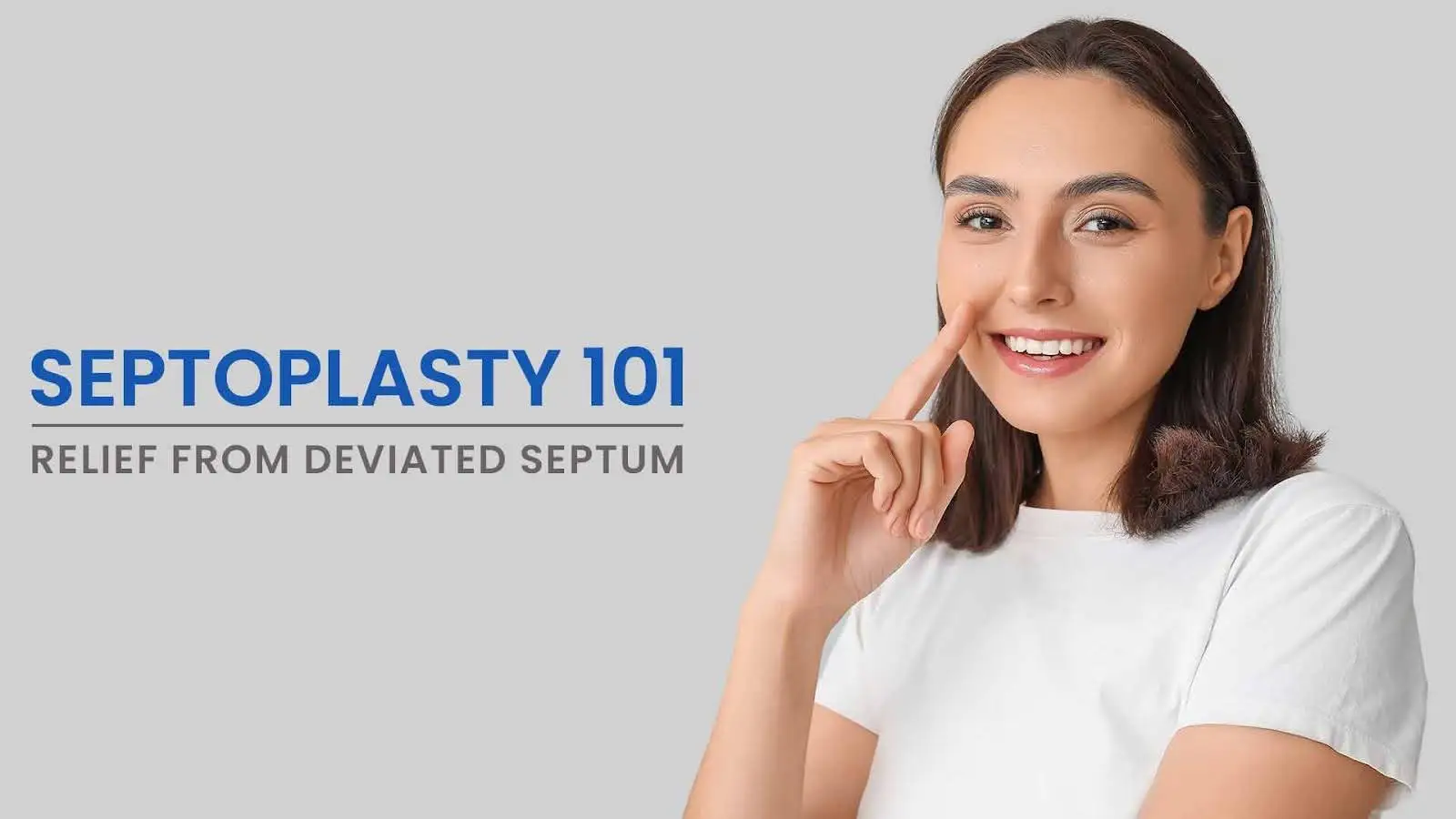
Simplifying the Medical Journey
For those unfamiliar with medical travel, Hayyan’s services simplify the process. Their packages, available in Economy, Comfort, and VIP classes, eliminate miscellaneous costs and ensure a smooth experience. Learn more about their offerings on Hayyan’s blog.
Next step:
Ready to breathe easier and enhance your quality of life? Septoplasty in Iran offers a cost-effective, high-quality solution with world-class surgeons and modern facilities. Let Hayyan guide you through every step of your medical journey, from visa processing to recovery. Explore their comprehensive packages and pricing details on Hayyan’s costs page or dive into more insights on their blog. Contact Hayyan today to start planning your Septoplasty in Iran!
8. Frequently Asked Questions (FAQs)
Q: What is the difference between Septoplasty and rhinoplasty?A: Septoplasty corrects a deviated septum to improve breathing, while rhinoplasty reshapes the nose for cosmetic purposes. They can be combined in a septorhinoplasty.
Q: How long does the Septoplasty procedure take?A: The surgery typically lasts 30–90 minutes, depending on the complexity.
Q: What is the recovery time after Septoplasty?A: Initial recovery takes one to two weeks, with full healing over several months.
Q: Are there any risks associated with Septoplasty? A: Risks include bleeding, infection, and septal perforation, but these are rare and manageable with proper care.
Q: How much does Septoplasty cost in Iran compared to other countries? A: In Iran, Septoplasty costs $1,800–$3,000, compared to $3,000–$22,000 in the US and $2,500–$10,000 in the UK.
Q: What services does Hayyan provide for medical tourists? A: Hayyan offers visa assistance, hotel bookings, interpreters, and medical coordination.
Q: How do I choose the right surgeon for my Septoplasty in Iran?A: Look for board-certified ENT surgeons with extensive experience. Hayyan connects you with top specialists.
Q: What should I expect during my stay in Iran for the surgery? A: Expect modern facilities, professional care, and comprehensive support from Hayyan, including accommodation and transfers.
Q: Is it safe to travel to Iran for medical treatment? A: Iran is a safe destination for medical tourism, with a well-developed healthcare system and experienced professionals.
